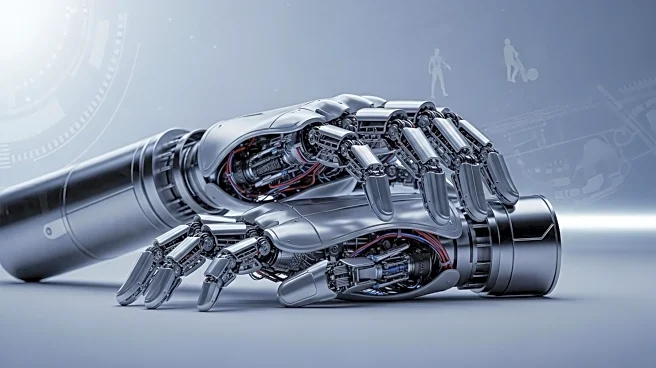What is the story about?
What's Happening?
Engineers are continuously pushing the boundaries of scale in various fields, from computing to space exploration. They have transformed the point-contact transistor into a product manufactured in vast quantities, estimated at 13 sextillion units between 1947 and 2018. This transformation showcases the complex and efficient workflows developed over decades. Engineers are also sequencing the genomes of 1.8 million species and addressing potential catastrophes like the Kessler syndrome, which threatens satellites in low Earth orbit. The issue highlights the challenges of scaling technologies for mass adoption, such as humanoid robots, which face hurdles in safety standards, reliability, and demand. Additionally, the complexities of scaling onshore wind turbines are discussed, emphasizing the need for proven transportation methods. Infographics play a crucial role in conveying the scale of challenges like carbon capture and interstellar travel, helping readers understand the vast distances and quantities involved.
Why It's Important?
The advancements in engineering scale have significant implications for various industries and societal progress. The ability to manufacture transistors in such large quantities has fueled the growth of the technology sector, impacting everything from consumer electronics to advanced computing systems. Sequencing genomes on a massive scale can lead to breakthroughs in biotechnology and medicine, potentially revolutionizing healthcare. Addressing the Kessler syndrome is crucial for maintaining satellite operations, which are vital for communication, navigation, and scientific research. The challenges in scaling humanoid robots and wind turbines highlight the need for innovation in transportation and safety standards, which could drive future developments in renewable energy and robotics. These engineering feats not only push technological boundaries but also inspire new ways of thinking about problem-solving on a global scale.
What's Next?
Future developments in engineering scale are likely to focus on overcoming current limitations in technology deployment and adoption. Engineers will continue to refine safety standards and reliability for humanoid robots, potentially leading to wider acceptance and integration into various sectors. The transportation challenges of wind turbines may spur innovations in logistics and infrastructure, supporting the growth of renewable energy. As genome sequencing progresses, new applications in personalized medicine and environmental conservation could emerge. Efforts to mitigate the Kessler syndrome will be crucial in ensuring the sustainability of satellite operations, prompting international collaboration and policy development. The ongoing exploration of interstellar travel and carbon capture technologies may lead to groundbreaking advancements in space exploration and climate change mitigation.
Beyond the Headlines
The exploration of scale in engineering raises ethical and cultural questions about the impact of technology on society. The rapid advancement of humanoid robots and AI technologies prompts discussions on job displacement, privacy, and the ethical treatment of autonomous machines. The environmental implications of scaling wind turbines and other renewable energy sources highlight the need for sustainable practices and policies. The potential for interstellar travel challenges our understanding of humanity's place in the universe, encouraging philosophical and cultural reflections on exploration and discovery. As engineers continue to push the limits of scale, society must grapple with the consequences and opportunities these advancements present.
AI Generated Content
Do you find this article useful?













